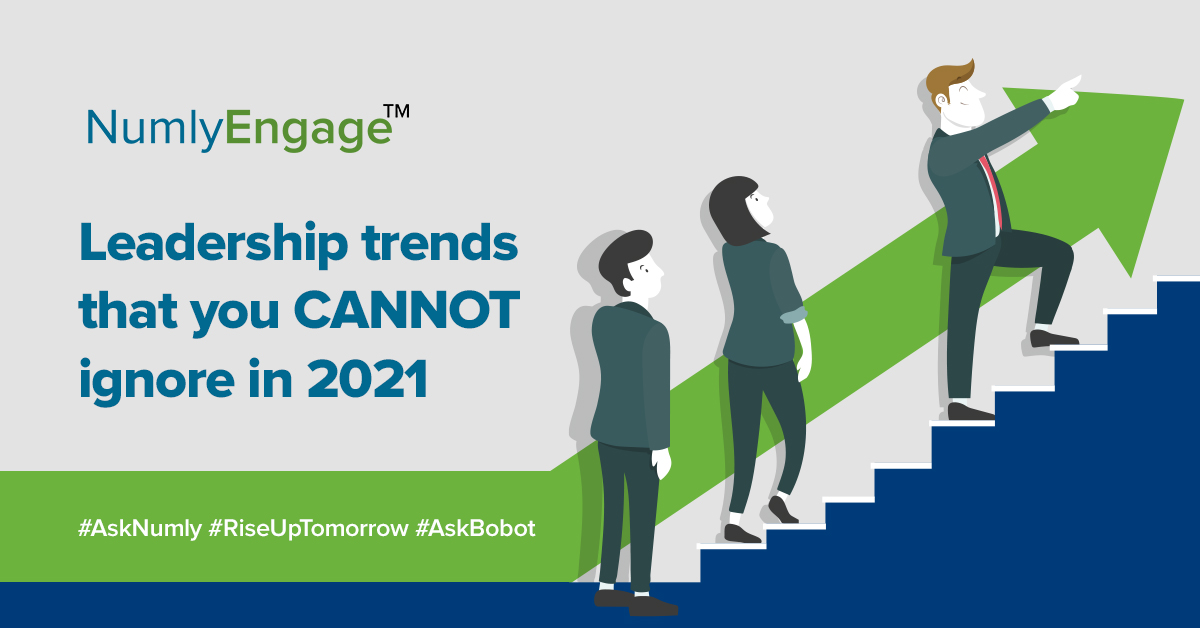The events in 2020 shook the business world to a stage where leaders must adapt if they, their business, and their teams want to survive and flourish. As we welcome 2021, it will be a valuable idea for business leaders to hold a vision for their organization’s future. We have entered the Fourth Industrial Revolution, yet most leadership development has remained dormant over the past few decades.
However, to remain relevant for the upcoming years, leaders have to incorporate transformations in every area of training and executive education. Once only talking points, let us see five key trends that hold substantial promise as they become a reality in 2021.
Prioritizing Employee Experience
The advent of COVID-19 boosted the trend of business leaders playing an extended role in the employees’ financial, physical, and mental well-being. Support consisted of improved sick leaves, financial aids, flexible working hours, and childcare provisions. Today, business leaders are mindful of the power of building employee experiences that reflect their business’s customer experience.
Read: Employee Experience and Talent Performance Management – Two Critical Pillars of HR 3.0
There are several reasons why employee experience matters to the company more than ever now.
- Firstly, with the work from home set up, employees work up to three hours more per day and juggle the organization and family’s rising demands. While businesses are witnessing increased productivity working from home, the gains come with a cost to employees’ mental health.
- Secondly, the toll that pandemic has taken on employees makes yet another reason for employers to prioritize employee experience.
- Thirdly, with increasing digitization and automation in the workplace, employees are looking for more ways to develop emotional connections during social distancing and isolation.
Approaches like employee journey mapping are now often utilized to fathom employee experience. As employees choose to permanently work from home, business leaders need to plan and monitor how the employee experience is intertwined with their organizational culture. Culture is rapidly becoming the new infrastructure for organizations.
Read: The Why and How of Coaching for your Newly-Remote Team
Designing Organizations for Resilience
In the former years, organizational redesigns were mainly focused on restructuring roles, supply chains, and workflows to build up efficiency. However, the pandemic has proved that, although this method maximized efficiencies, it was brittle, as the systems lacked the flexibility to respond to disruptions and changes. Resilient businesses are always better placed to react during significant disruptions.
To build a more responsive business, business leaders must design roles and structures around outcomes to amplify agility, flexibility, and formalize how processes can flex. Also, consider offering employees distinct, adaptive, and flexible roles to attain cross-functional knowledge and training. Business leaders need to be involved in role designing and forming flexible workflows to make sure that employees of all backgrounds and their requirements are considered when the business is undergoing workflow redesigns.
Read: How to Invest in Your Company’s Most Important Asset – People
A Move Towards Well-being Leadership
It takes a massive shift in perspective from seeing well-being as something on the side-line to rather being at the heart of a business’s mission and essential to keeping up the productivity. Today, business leaders worldwide are beginning to shift their views on the role of well-being in the organization.
Well-being leadership is taken as an approach to business and society that emphasizes maximizing outcomes through eight distinct aspects: economic, material, physical, psychological, social, cultural, environmental, and spiritual. This leadership approach states that financial success is no adequate measure of the quality of life and that all the factors mentioned above are interconnected to offer a sustained economic output. Business leaders must understand that:
- Both, purpose and profit, are critical to facilitate sustainable business outcomes
- Well-being at work, in their business, and broader society are all interconnected
- They must build a culture of well-being by surrounding themselves with people who have similar realizations
Becoming an Agile Leader
2020 has been a long and challenging year. for everyone. In such disrupting and continually evolving times, agile leadership is the need of the hour in our fast-paced business landscape. In times of ambiguity, business agility offers stability – a lucrative way to manage change and respond productively.
Organizations with agile leadership have demonstrated advantages like increased revenue, rapid turnaround times, and supreme quality offerings. However, there always has been confusion and misinformation when it comes to comprehending agile leadership. Organizations often link agility with a framework like Scrum instead of a mindset. They often fail to understand how critical it is to learn the agile mindset and periodically practice that mindset and lead by example. As agile leaders, business leaders must delegate outcomes, encourage individuals, and offer them the space to do an exceptional job.
Agile values and principles inspire business leaders to collaborate and encourage others to grow and share in decision-making. Agile leaders tend to perceive failures as opportunities to learn and nurture trust and psychological safety in their organizations.
Read: From “Remote Boss” To “Virtual Leader” – How to Make the Transition
Managing Remote Workforce
With the advent of COVID-19, several organizations provided permanent work from home opportunities to their employees. As businesses shift to more remote work operations, business leaders will be required to alter employee experience strategies and employees will be required to collaborate digitally. Business leaders will need to consider how to shift performance goal-setting and employee evaluations for a remote context. Leaders will need to establish clear business objectives, run great virtual meetings, communicate clearly, and make the most of team members’ individual and collective strengths.
Read: How Has the Role of Leadership Changed with COVID-19?
Leadership development fosters the human capital of a business. As we step into 2021, it is a thrilling time for a complete transformation of our departments. Which of these leadership trends are you going to put into practice to become an agile leader?
To transform your Work-from-Home (WFH) teams with AI, take a look at NumlyEngage(™). Get a live demo today!

